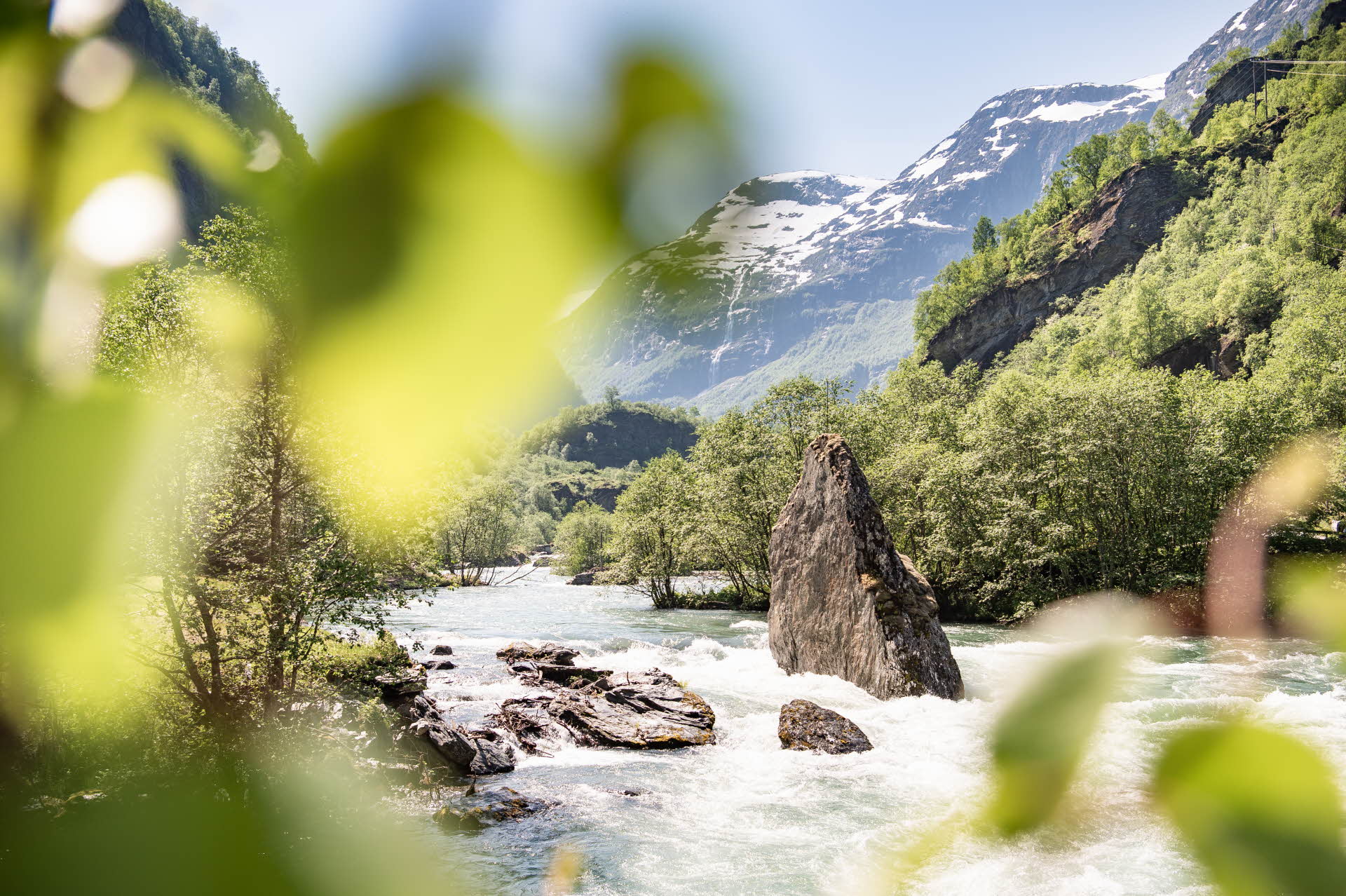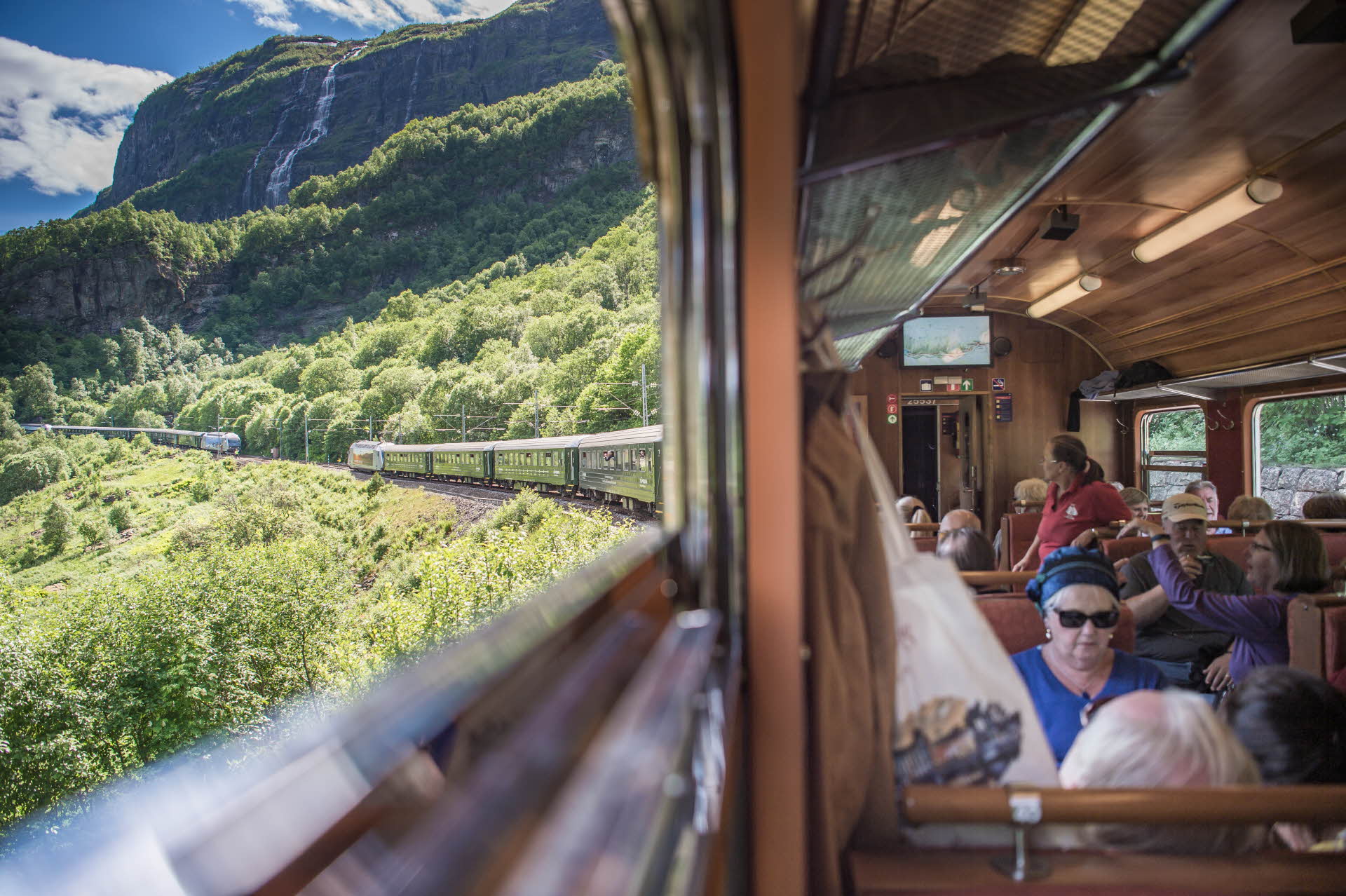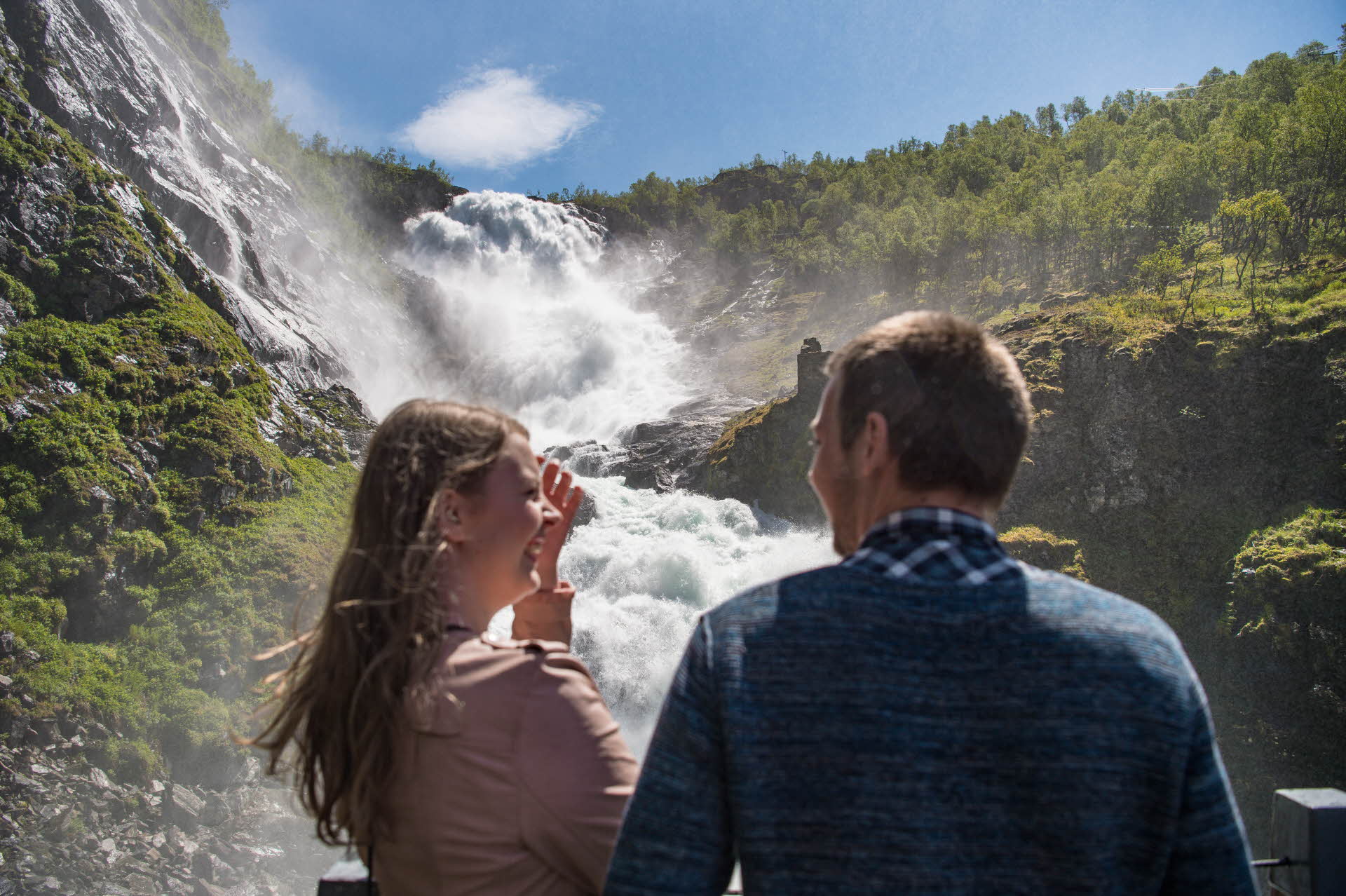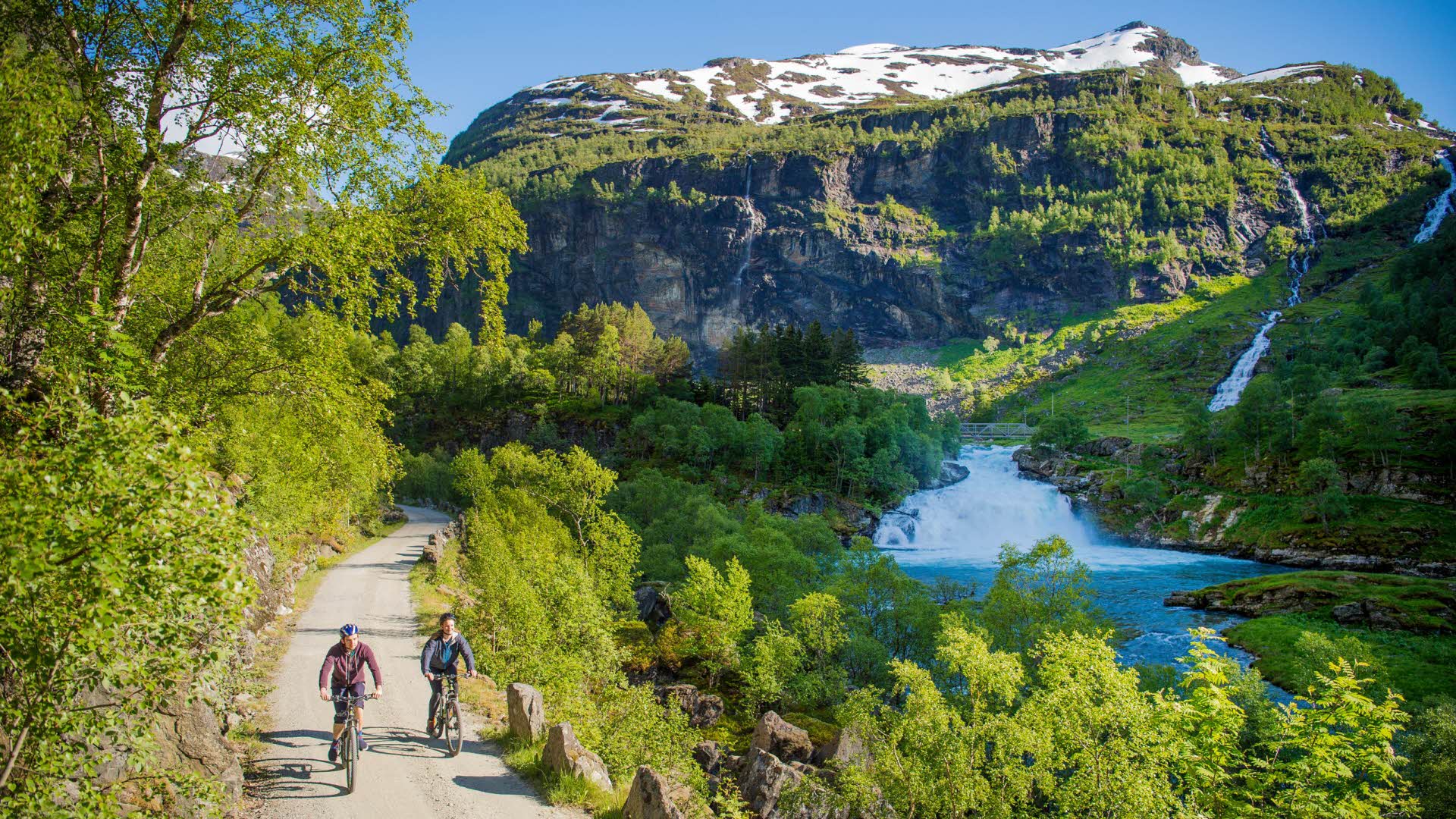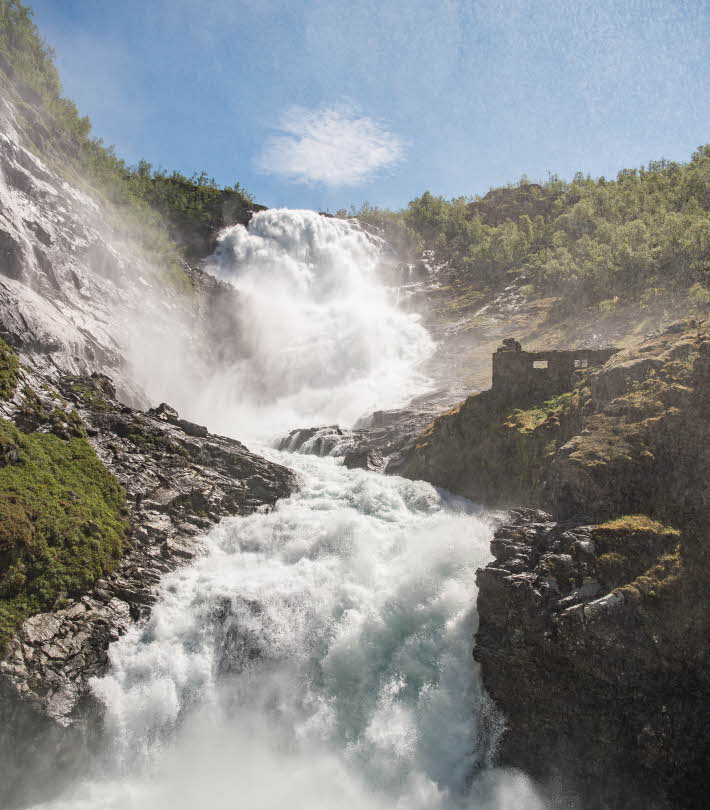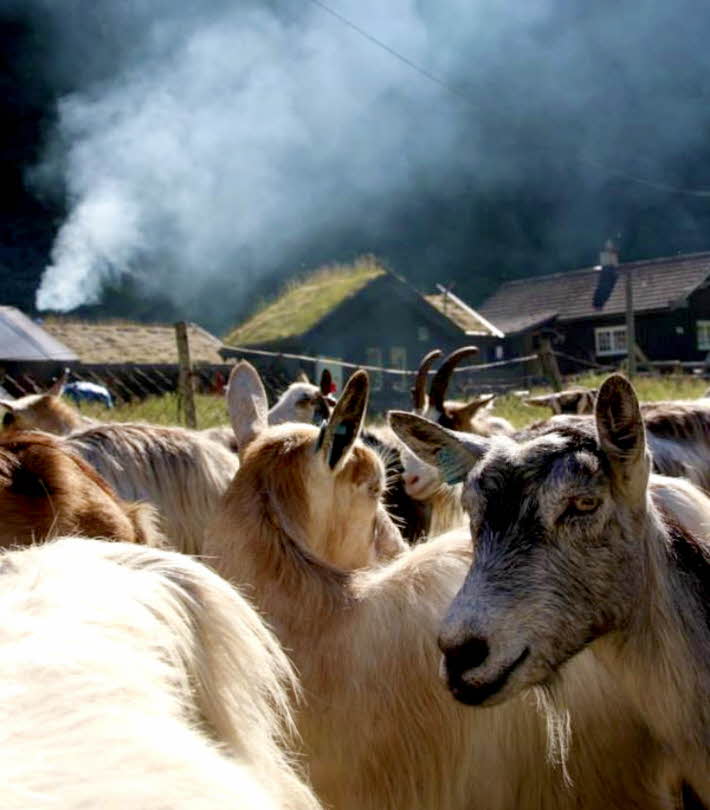Starting point for other activities
The Flåm Railway isn’t just a great trip in itself – it also provides an excellent starting point for other activities. Vatnahalsen is a beautiful place to start from if you enjoy hiking. Here, you can go round Reinungavatnet, along Rallarvegen or down through Flåmsdalen.
If adrenaline is more your thing, the Flåm Zipline starts off at Vatnahalsen as well. Scandinavia’s longest zipline will take you down Myrdalsberget to Kårdal farm. From there, you can hire a bike and cycle back to Flåm. Alternatively, you can walk to Blomheller station and jump back on the train there.
Cycling the entire valley from Myrdal to Flåm is also a fantastic trip, and it’s the point along Rallarvegen where the snow clears earliest in the season. First, you’ll cycle down to the 21 hairpin bends from Vatnahalsen to Kårdal. If Rallarrosa Stølsysteri is open, we recommend stopping here for a Norwegian svele pancake with goats cheese. Most of your onward journey is downhill, past lovely little farms and along the beautiful Flåmselv river. Watch out for goats in the road! Stop off at Flåm Church, which dates back to 1670. If it’s open, it’s well worth having a look inside at the art and wall paintings.
